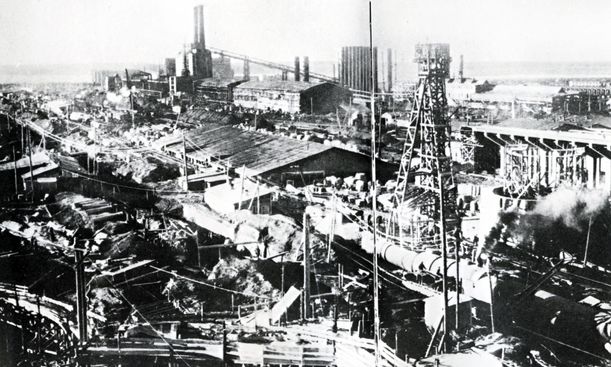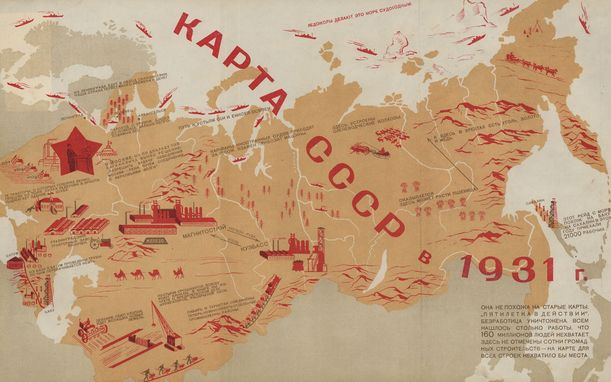The Five-Year Plan
The highest priority for the Bolsheviks was the country’s industrial development. A bitter quarrel flared up in the party over the “right course”.
The first Five-Year Plan (1928–1932) laid the ground. Market-based incentives no longer played a role. To realize its large-scale economic projects, the Soviet government made increasing use of forced labour. The industrialization strengthened the USSR, but exorbitant goals and ruthless methods led to rampant injustices.
The Five-Year Plan was accompanied by a major propaganda campaign intended to demonstrate the superiority of Soviet Communism at home and abroad (for example by means of the multilingual magazine USSR in Construction). Images of the large-scale construction projects were widely publicized. What these photos do not show, however, is the fact that the gigantic projects could never have been realized without the rapidly growing number of Gulag inmates.
The public was presented with scapegoats in show trials against “wreckers”. A spirit of optimism nevertheless took hold in some parts of the Soviet population – after all, in contrast to the world economic crisis, the Soviet economy had taken an upturn.
Map of the USSR, 1931
Inscription at bottom right: “It’s different from the old maps. ‘The Five-Year Plan in action’. Unemployment has been eliminated. There is so much work for everybody that 160 million people do not suffice. Hundreds of major construction sites have not even been indicated here – there wouldn't be enough space on the map for all of the construction sites.”
Source: “Memorial” Collection, Moscow

Construction site in Magnitogorsk (Urals), ca. 1931
One of the chief projects of the Five-Year Plan was the erection of a gigantic centre for iron and steel production, complete with a city of its own. Steel production was considered one of the most important indicators of industrial development.
Source: Deutsches Historisches Museum, Berlin

